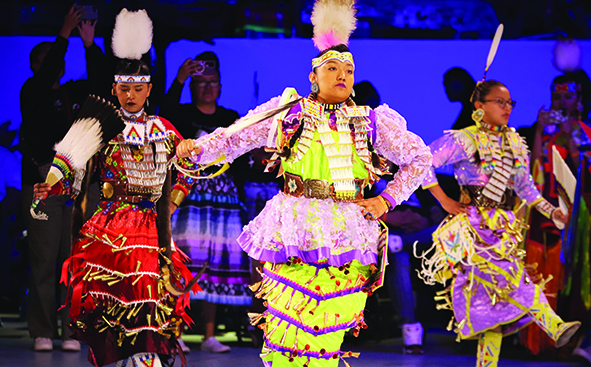
By Micheal Rios, Tulalip News
The Gathering of Nations, known as the largest powwow in the United States, is more than a cultural celebration – it’s a thriving hub of triumph that showcases tradition and a fierce determination to honor our ancestors.
Of course, there is a constant emission of celebratory vibes as thousands of culture bearers from across Native America come together to witness the highest echelon of powwow performances. From tiny tot to golden age, Native men and women from all across the four directions take to the arena floor to proudly dance like their forebearers. From fancy shawl to jingle dress and traditional, to fancy dance, grass dance and the always captivating chicken dance, 2,200+ dancers radiated generations worth of resistance to colonial assimilation over the three-day Gathering.
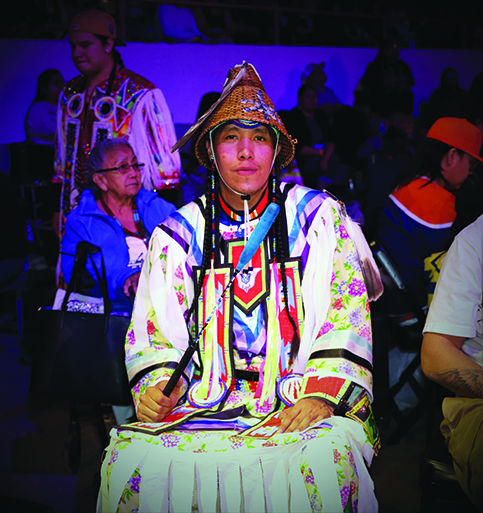
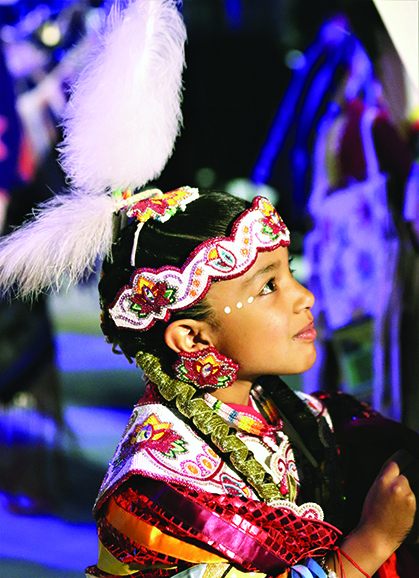
There are entire families who view Gathering as an annual rite of passage that demonstrates their commitment to each other and to those who came before them. Like the Yarholar clan from Sac & Fox Nation. Father Cortney learned to fancy feather dance from his grandfather and has since taught his 14-year-old son and 9-year-old daughter how to carry on the fancy feather legacy.
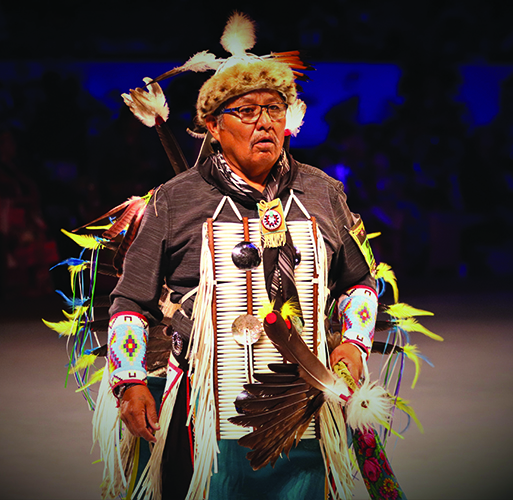
“The fancy feather dance has been a part of our family tradition for generations. How it’s been explained to me was we had a grandfather, way back there in the family tree, who went through ceremony and was given a dance. He was told to take care of it and teach his children who would teach their children, so on and so forth,” recalled Cortney Yarholar. “With each passing generation, the older ones taught the younger ones not just the dance, but the lessons that come with it; how to hold yourself in and out of the arena, how to take care of the body and spirt, and how to embrace the good medicine that comes from it.
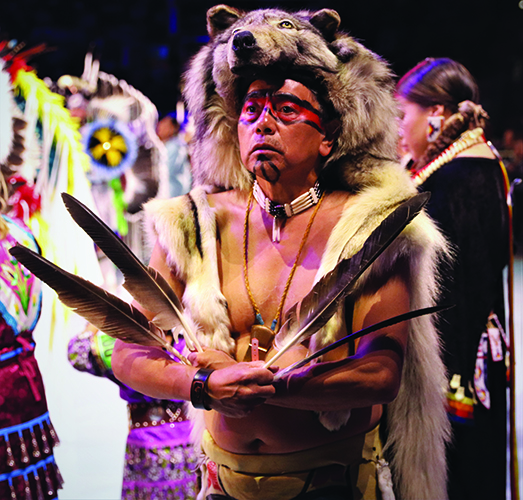
“It’s a gift from Creator that was given to my family a long time ago and continues to be a source of strength and unity, especially for the relationship between my son and I. It’s so special to be able to travel and share these experiences with him. Even the simplest of things, like helping him put on his regalia and braiding his hair, these are special moments we get to share. Each time, I’m reminded of when I was his age and my uncles helped me paint up. There are times when I watch my son and I remember being a little one dancing and looking over to see how proud my grandfather was as he watched me. He was 90-something at the time and couldn’t dance any more, but he’d sit there and tap his cane to match my rhythm. The harder I danced, the harder he tapped that cane while having this huge smile. So, for me, dancing fancy feather is a spiritual connection that links the past to the present.”
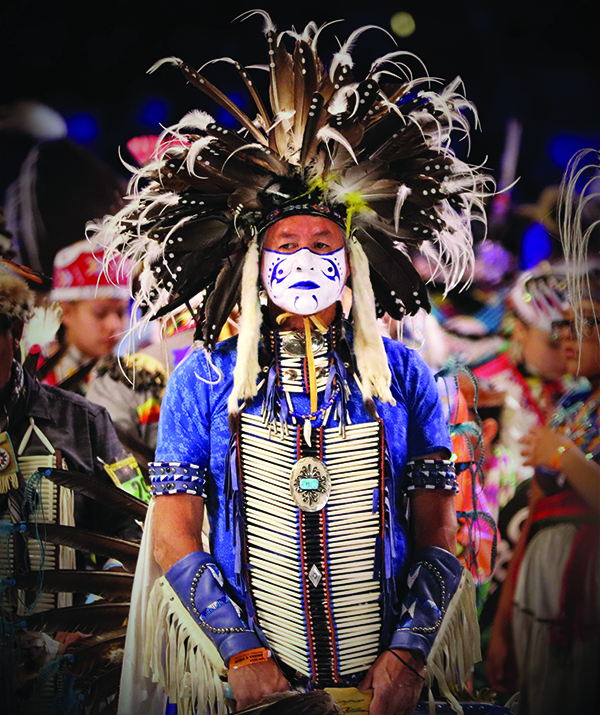
In the present, the youngest generation continues to lead in their own way. Often in such subtle ways that their offerings may be overlooked by those not paying great attention. Tiny in stature but immense in power are those little ones who carry on culture and tradition without even knowing it.
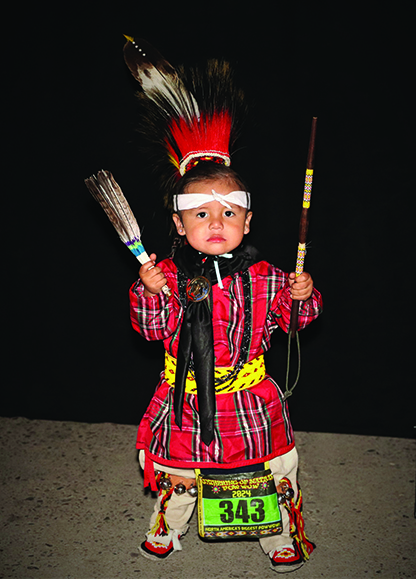
Such is the case with a remarkable 2-year-old named Roderick Walker (Seminole). He’s been immersed in the powwow circuit since the womb, with both his parents being acclaimed dancers. So much so that he’s created his own type of powwow dance. A resounding remix that represents his Seminole, Navajo, and Sac & Fox heritage
“Basically, he learned from all his family. His cousins, aunts and uncles, and grandparents are all dancers,” shared Roderick’s mom, Darrica. “He’s taken a little bit from everyone and created an all-around style all his own. It’s a little bit fancy, little bit southern, little bit traditional, and then a little bit whatever comes to him in the moment.
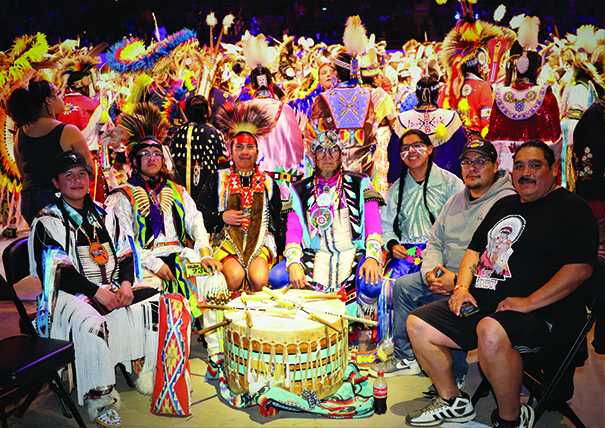
“We’ve travelled all around Indian Country and into Canada, too, for powwows and ceremonies,” she added. “We’ve never had to tell him to dance. As soon as he was standing and heard the music or heard the drum, he was dancing. He just loves it. I’m so excited to see him continue to grow and represent for his people wherever he dances.”
Young Roderick’s one-of-a-kind dance style earned him the title of #1 tiny tot boy upon the conclusion of Gathering of Nations.
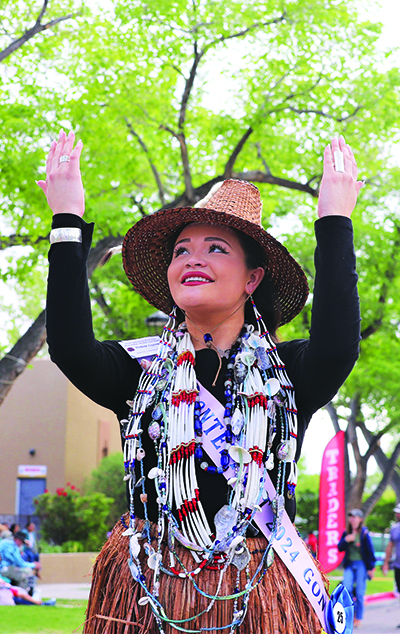
Among the tens of thousands of Native Americans who journeyed to Gathering, one particular powwow princess stood out. That was Quinault’s Violette Capoeman. Dawning a cedar cap and cedar skirt, while wearing an assortment of shell necklaces harvested from the Salish Sea, she was regarded as the only Coast Salish contestant vying for the coveted crown of Miss Indian World.
In traditional Pueblo territory, deep in dessert terrain and amongst so many tribal citizens from the Great Plains, the 18-year-old Violette was far from the familiarity of towering evergreen trees and endless blue sea.
“This entire experience has been a culture shock,” she admitted. “But we’re all relatives and interconnected by a larger sense of culture that allows us to befriend one another and share our personal stories and ceremony experiences. Over the past few days, I’ve really enjoyed being able to learn from my fellow princesses about their tribes’ customs. They’ve shared so much with me and I’m been fortunate to be able to share with them, too. There’s been so questions about my cedar regalia because they aren’t use to seeing it like we are back home.
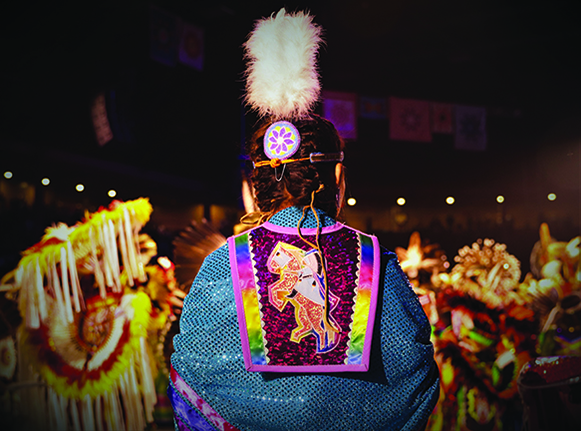
“Looking back at my time here in New Mexico, I’ve built so many friendships in such a short amount of time with people from all over the country. That’s really the beautiful thing at the heart of our Native American culture, that ability to connect.”
Violette’s traditional Lushootseed name translates to Where Thunder Dropped Whale. Befitting, since her growth and development on the powwow circuit gave her confidence, the internal thunder, if you will, to be dropped into Gathering of Nations and stand proud as the only Coast Salish princess; a symbolic whale in pueblo territory.
“It’s been a transformative experience, and I’m just so happy to be the representative for costal nations,” added Violette.
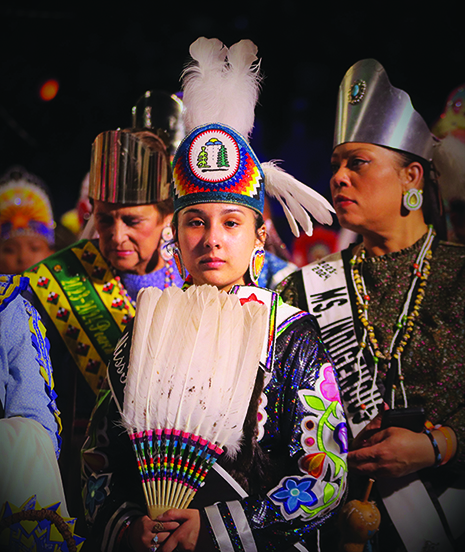
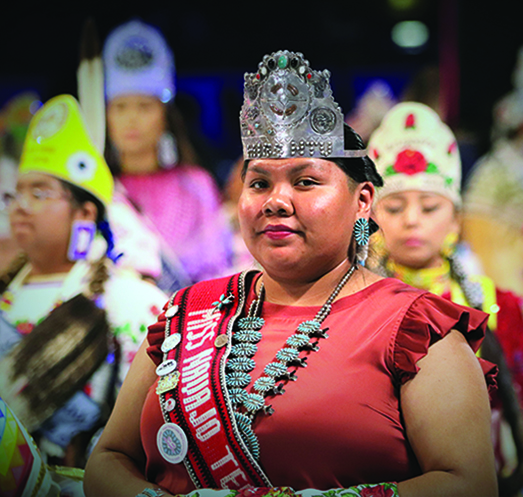
The sentiments expressed by Cortney, Darrica, and Violette give credence to the crucial role Gathering of Nations plays in sharing the many nuances of Native American powwow dance, music, regalia, and other contemporary cultural expressions, like those offered by 2-year-old Roderick. It’s both a hub of triumph and a platform of preservation for traditional practices that are very much alive, continuing to evolve, and remain as vibrant as the photographs accompanying this article.